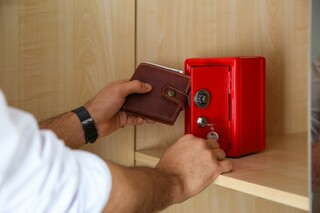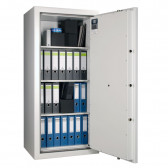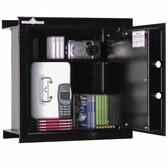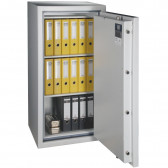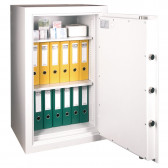The purchase of an armoured safe is the first step towards effective protection of your property. Then you need to think about where to put the safe in order to make robbery as difficult as possible for a burglar. Find out how to protect yourself from theft and where is the best place to put your safe.
Where to put the safe? Proven locations
Many people make it easy for thieves. They leave keys, cash and other valuables right at the front door. Robbers know this and search the cupboards by the door first.
It is a good idea to place the safe in a part of the house which is as far away as possible. An attic or basement is a good place. If you have a free-standing armoured cabinet, it is a good idea to build it into a normal cupboard. This way it will not be conspicuous.
The place for the safe should be away from windows. Thieves observe the home of their victim for a long time before robbing. They note the layout of the rooms and the daily rituals of the household members. They observe through binoculars where valuables are stored. When they find the right moment, they can even attack in broad daylight while the household members are present.
Still wondering where to put the safe? Perhaps your child's room would be suitable. Thieves don't go there because they know they'll come across noisy toys. By the way: in another text you will read about a safe for a child. The bathroom, kitchen or pantry might also be a good place. These places are rarely entered by robbers.
Hide a safe in the wall or floor
You can hide an armoured safe in the wall or the floor. Special safes can be permanently integrated into the structural elements of a building.
It is best to decide whether to place a safe in the wall or in the floor before you build the house. Then you can plan exactly where to put the safe. However, if you want to install a safe in an existing building, nothing is lost.
Before buying a safe, consult with an engineer who is familiar with building structures. Placing the safe in a load-bearing wall can weaken it. If it turns out that the wall is too thin for the safe, you will need to make it thicker by adding another layer of bricks.
Remember that standard places such as the bedroom, living room and study are checked first by a thief. Hiding a cache behind a painting is obvious. Try to choose unusual places. A safe hidden in the floor is a very good option. Few robbers will look under the carpet or go down to the basement.
Choose a safe that suits your needs
Now that you know where to put the safe, it's time to choose a model. Tailor your armoured safe to suit your needs. First of all, pay attention to its size. Perhaps at the moment you think a small or medium-sized safe will suffice.
But think about whether you'll need a larger model in the future. We all tend to hoard possessions, so you'll probably have more valuables to protect in a few years' time.
Armoured safes can have various purposes. There are, among others:
● home safes,
● office safes,
● hotel safes,
● safes for weapons,
● safes for chemicals,
● safes for pharmaceutical products,
● vaults.
What are the differences between the above-mentioned safes? Home safes are mainly used for keeping jewellery, cash and other valuables there. When ordering such a safe, you can freely personalise its dimensions and the number of shelves, drawers and compartments.
Office safes usually take the form of large cabinets and are used to store employee data and documents. GDPR regulations mandate the protection of sensitive information, which is why businesses choose to purchase office safes.
Hotel safes are small and designed for ad hoc use. When you go to the swimming pool, gym, sauna or spa area, you can deposit your phone, wallet or car keys there.
Weapon safes have special holders for the safe storage of weapons. They also have additional lockers for ammunition and documents.
Armoured safes for chemicals and pharmaceuticals must meet additional standards, such as protection against the explosion of toxic substances or maintaining the right temperature inside.
What class of safe should I choose?
The class of a safe determines the safety of the items deposited. The higher, the better. The lowest class according to the Polish and European standard PN-EN 14450 is S1. Safes that meet the requirements of class S1 can be used to store weapons, among other things.
Buying a safe with the lowest resistance class is not recommended. If you are robbed and the price of the items deposited exceeds the limit of the protected value set by your insurer, you will have problems obtaining compensation.
In the case of S1 class safes, this limit is approximately PLN 60 000 and depends on the current average gross salary. It is worth noting that the price of several weapons together with optical sights may exceed this value. For your own safety, choose an armoured cabinet with a higher resistance class.
As you can see, where to put the safe is not the only problem. You also need to think about the purpose of the safe. The burglary resistance class and the way it can be opened are also important. If you don't have an armoured safe yet, don't wait and order a safe that is perfectly tailored to your needs today.
